Black rice, also known as forbidden rice or purple rice, is easy to prepare. The following instructions work well with a stovetop or Instant Pot.

3 Common Varieties Of Black Rice
Here are the most common types of black rice:
- Black sticky rice - long-grain glutinous rice used in Thai desserts and often mixed with white sticky rice and cooked by steaming.
- Black Japonica rice - a mixture of 25 percent black short-grain japonica rice and 75 percent medium-grain red rice developed in California that’s good for rice salads.
- Chinese black rice - grown in Zhejiang Province in eastern China and eaten as juk (congee or porridge), is firm, and cooks faster than brown rice.
How To Cook Black Rice
- Two cups of water and ¼ teaspoon salt for every one cup of dry rice.
- Bring to a boil and simmer, then leave covered for 45 minutes.
For a more in-depth answer, follow the tutorial included here:
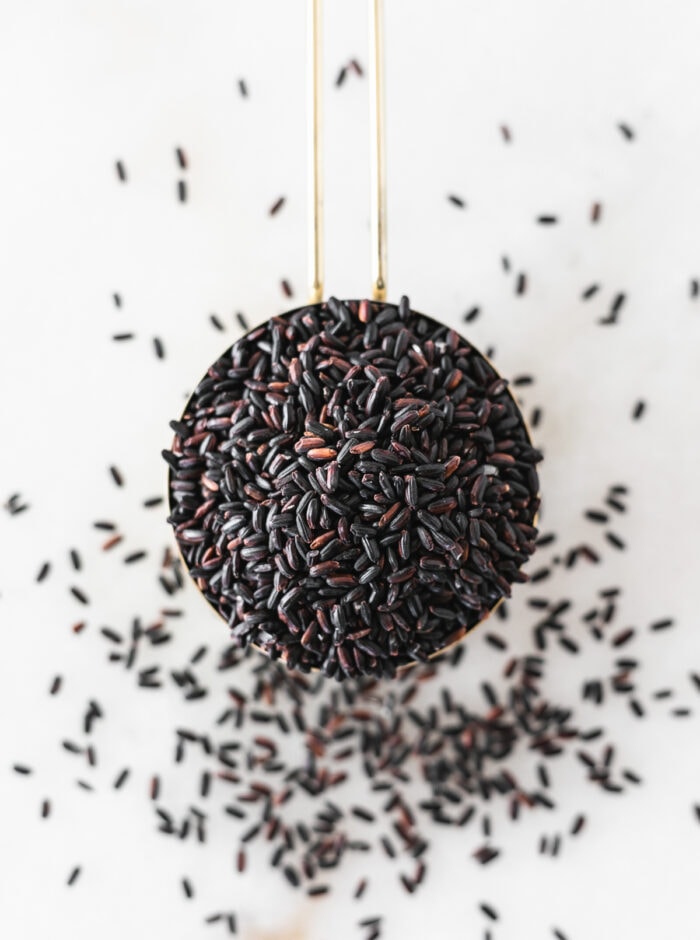
What Is Black Rice?
The origins of black rice are unknown. It is commonly believed the whole grain originated in China or India. It is also known as forbidden rice as it was reserved for Chinese royalty. However, today, it is enjoyed worldwide.
Black Rice Health Benefits
The compound that gives black rice its purplish hue is anthocyanin. The chemical acts as an antioxidant that protects the body against oxidative stress, which reduces inflammation and chronic disease.
Vitamin E Nutrients
Black rice is a rare type of germplasm containing tocopherols, a powerful antioxidant otherwise known as vitamin E.
The rice has more nutrients than normal white rice. It's a whole grain, which means it has more fiber than its white rice counterpart. It also has more protein per serving, with four grams per serving. Black rice is also an iron source.
Reduces Non-Communicable Diseases
Studies have also found that by including black rice in your daily diet can prevent non-communicable diseases (NCD) like reducing cancer cells, atherosclerosis, hypertension, diabetes, osteoporosis, asthma, digestive health, and stroke prevention among women. Besides the health benefits, black rice is beautiful, tastes slightly nutty, and has a delicious chewy texture.
Should I Rinse Black Rice Before Cooking?
Rinsing rice removes some of the starch that's on the outside of the grains. When you clean rice with water, the grains become more fluffy and less gummy or sticky. it's a good idea if you're just serving plain rice.
However, if you want to use it with porridge, for example, the extra starch gives the rice a creamy texture.
How To Cook Black Rice On A Stovetop

- Rinse rice in a fine mesh strainer (optional). Drain and add to a medium saucepan.
- Add water and salt to the rice. Stir. Bring to a boil over medium heat.
- Reduce heat to low, cover, and simmer for 45 minutes, until the liquid is absorbed.
- Remove from heat and let it stand for 5-10 minutes with the lid on.
- Fluff with a fork and serve.
How To Cook Black Rice With An Instant Pot
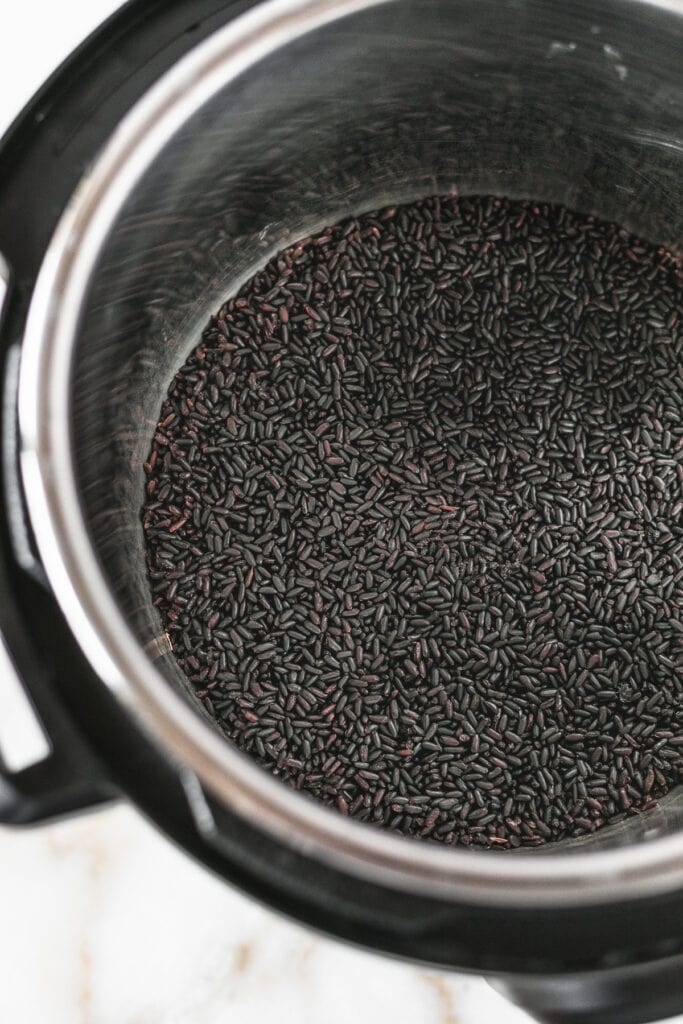
- Rinse rice well in a fine mesh strainer. Drain and add to the pot of the Instant Pot.
- Add water and salt to the rice. Stir.
- Close the Instant Pot lid and set the vent to Sealing. Pressure cook on High for 17 minutes.
- Let pressure release naturally for ten minutes. Carefully open the vent to release any remaining pressure.
- Fluff rice with a fork and serve.
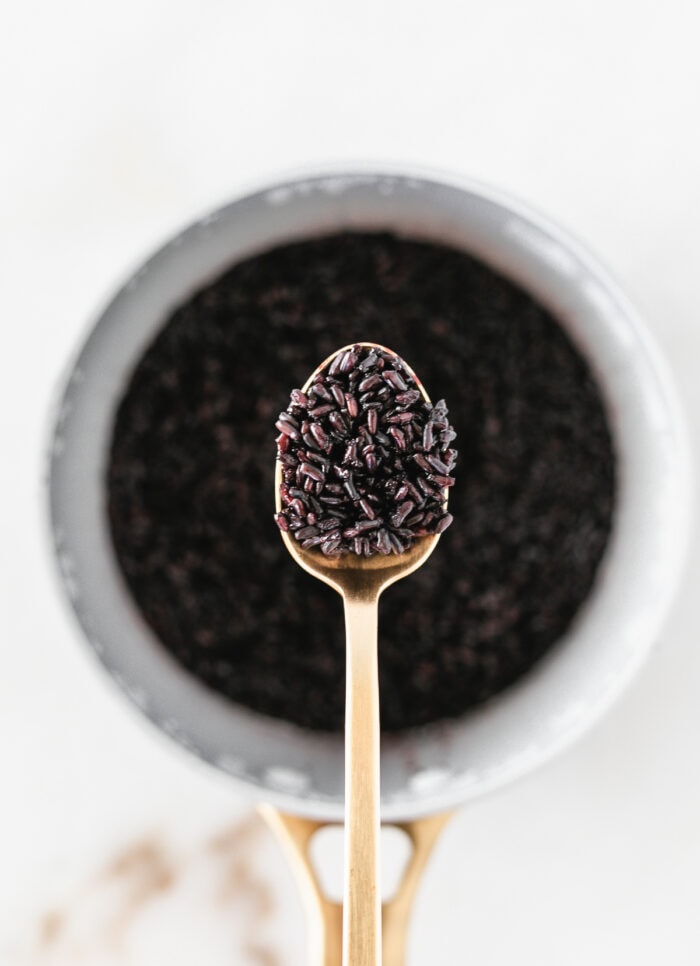
How To Store Leftover Rice
Leftover rice can be kept in a sealed container in a refrigerator for four days. Leftover black rice is great for making black rice porridge or fried rice.
Frequently Asked Questions (FAQ)
When cooking black rice, the water ratio is 2:1 - two cups of water per one cup of black rice.
Black rice is harder to cultivate than other rice varieties. It has a crop yield rate of ten percent. For example, cultivated white rice sells for .82 per pound. However, a pound of black rice costs between $4 and $6 per pound.
China produces 62 percent of the world’s black rice. In second place is Sri Lanka with 8.6 percent, Indonesia with 6.2 percent, and India with 5.1 percent. The remaining black rice is harvested by smaller countries.
Black Rice Conclusion
Just because black rice is more expensive than traditional white rice doesn’t mean it’s harder to cook.
Black rice cooking is just as simple as white or brown rice cooking.
When cooking black rice, just make sure you use the correct rice-to-water ratio. If you can do that, you’ll be fine.
Did you make this recipe? Please leave a star rating in the comments!
PrintHow To Cook Black Rice
Black rice (also called forbidden rice or purple rice) is easy to cook with these simple instructions for the stovetop or Instant Pot!
- Prep Time: 5 minutes
- Cook Time: 45 minutes
- Total Time: 50 minutes
- Yield: 4 servings 1x
- Category: side dish
- Method: stovetop
- Cuisine: American
Ingredients
For Stovetop Black Rice:
- 1 cup black rice
- 2 cups water
- ¼ tsp salt
For Instant Pot Black Rice:
- 1 cup black rice
- 1 cup water
- ¼ tsp salt
Instructions
For Stovetop Black Rice:
- Rinse rice well in a fine mesh strainer. Drain and add to a medium saucepan.
- Add water and salt to the rice. Stir. Bring to a boil over medium heat.
- Reduce heat to low, cover, and simmer 45 minutes, until all of the liquid is absorbed.
- Remove from heat and let stand 5-10 minutes with the lid on.
- Fluff with a fork and serve.
For Instant Pot Black Rice:
- Rinse rice well in a fine mesh strainer. Drain and add to the pot of the Instant Pot.
- Add water and salt to the rice. Stir.
- Close lid of Instant Pot and set the vent to Sealing. Pressure cook on High for 17 minutes.
- Let pressure release naturally for 10 minutes. Carefully open the vent to release any remaining pressure.
- Fluff rice with a fork and serve.
Notes
- Rinsing is optional. It will make the grains more fluffy and less sticky.
- Use a big enough saucepan on the stove to prevent boiling over.
- Recipe can be doubled.
- Store leftover rice in an airtight container in the refrigerator up to 4 days.
Keywords: how to cook black rice, stovetop black rice, instant pot black rice


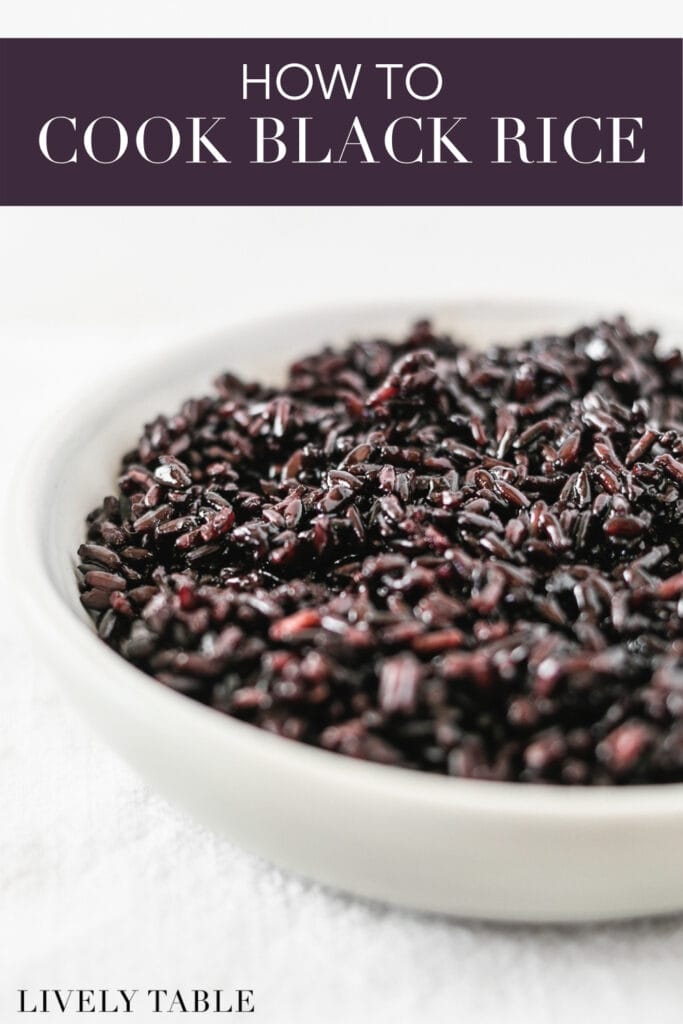
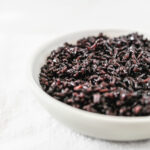
Jenna says
I came across another tutorial on the web. She said the pasta method was best. She used 1 cup black rice and then TWELVE CUPS (!!!) water. After adding my 9th cup to my rather large pot, I thought "this can't be right". I just think all the nutrients from the rice will be gone. Have you ever tried such a method?
I have made wild rice many times and have no problem with the usual cooking methods for hard, dark rice. So this "pasta method" was one I've never heard of.
Kaleigh says
No, I've never done it that way before, though I've heard it used for cooking regular rice.